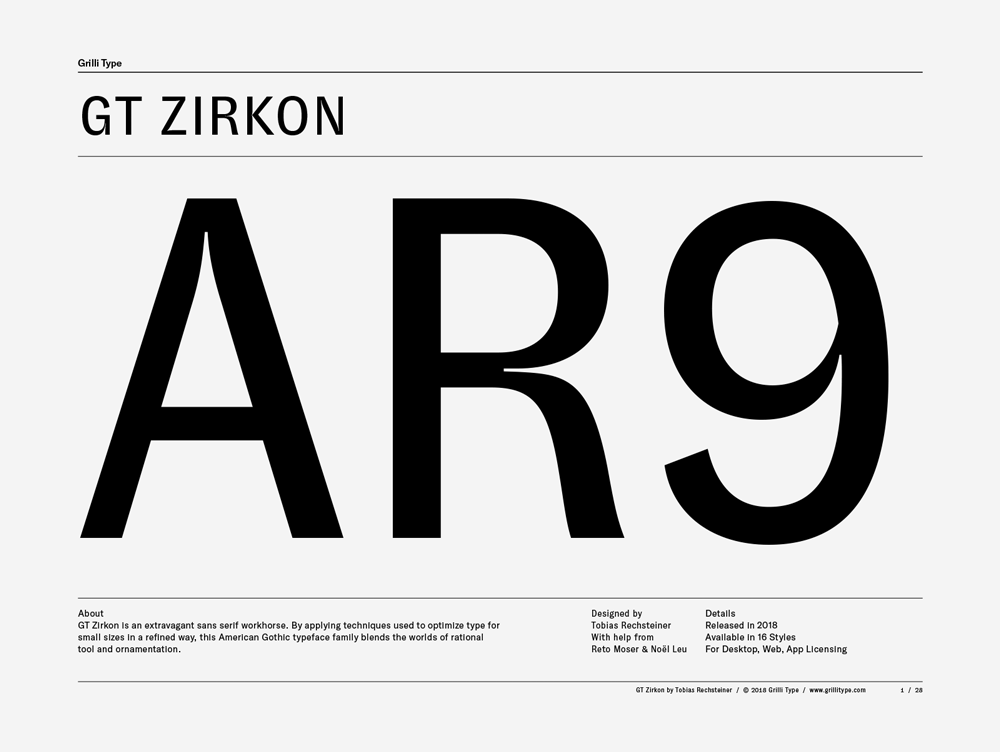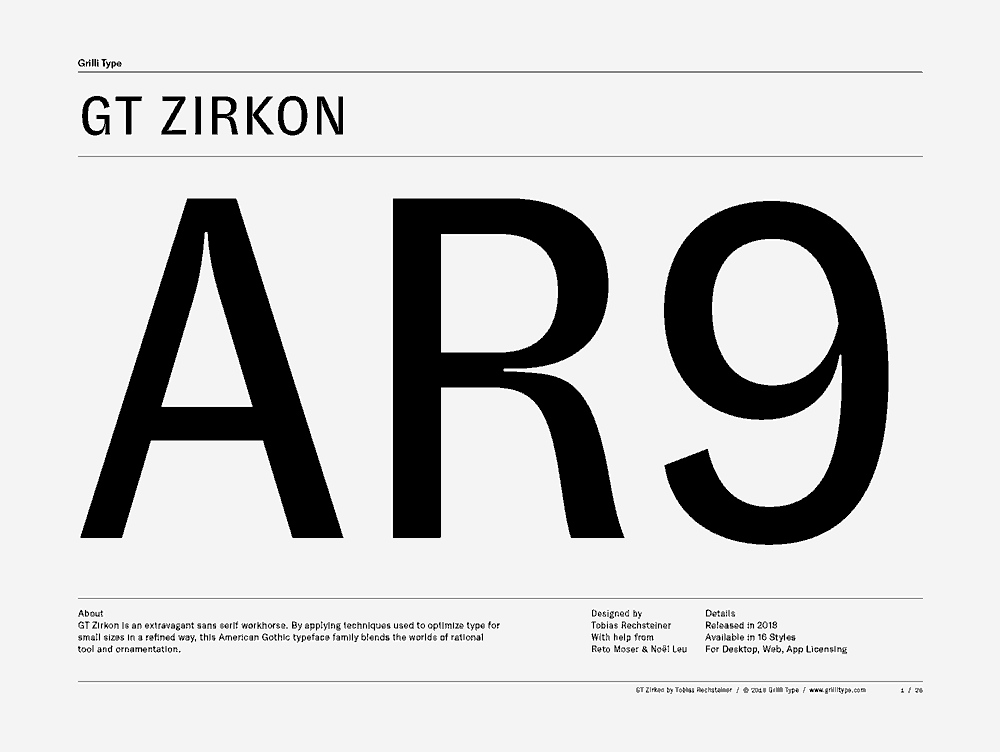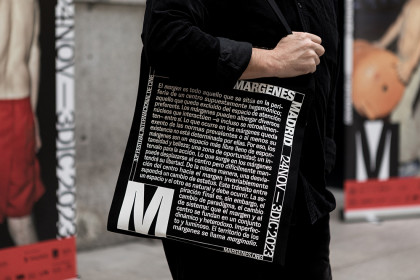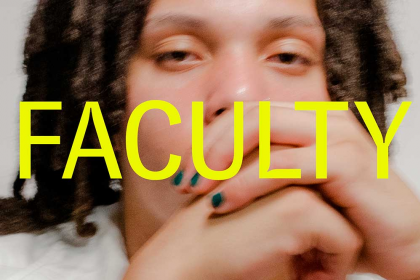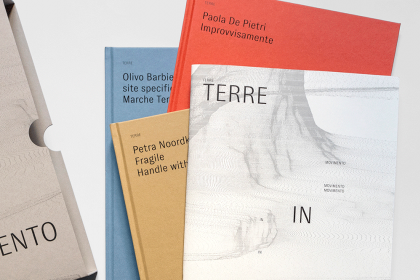GT Zirkon
Family overview
- Ultra Light Italic
- Thin Italic
- Light Italic
- Book Italic
- Regular Italic
- Medium Italic
- Bold Italic
- Black Italic
- Ultra LightDuring the growth process, crystals are also highly susceptible to consciousness imprinting, whereby the meditations, through-patterns, healing energy or bioelectric field identity of the grower may be enjoined within the crystalline structure and memory.
- Ultra Light ItalicRecent experiments, for example, have shown that crystals grow five times faster when their supersaturated solution is subjected to frequencies of 10 to 100 cycles a second.
- ThinZircon often contains traces of radioactive elements in its structure, which causes it to be metamict.
- Thin ItalicCommercially valuable minerals and rocks are referred to as industrial minerals.
- LightThe English word “zircon” is derived from “Zirkon”, which is the German adaptation of this word.
- Light ItalicSome rocks, such as limestone or quartzite, are composed primarily of one mineral—calcite or aragonite in the case of limestone, and quartz in the latter case.
- BookCurrently, zircons are typically dated by uranium-lead (U-Pb), fission-track, cathodoluminescence, and U+Th/He techniques.
- Book ItalicMinerals can be described by their various physical properties, which are related to their chemical structure and composition.
- RegularCursed gems are the exception to the rule, however, for in most respects, gems and crystals are generally looked upon favorably, having properties for good luck, for healing, and in aiding in psychic abilities.
- Regular ItalicCommercially valuable minerals and rocks are referred to as industrial minerals.
- MediumScientists then studied the diamonds’ composition, looking specifically at their carbon isotopes.
- Medium ItalicNew York University chemists have created three-dimensional DNA structures, a breakthrough bridging the molecular world to the world where we live.
- BoldMinerals are classified by key chemical constituents; the two dominant systems are the Dana classification and the Strunz classification.
- Bold ItalicThe green coloring in many rounded pebbles usually indicates the Zircon is radioactive variety.
- BlackAn interesting habit occasionally exhibited in Zircon from a few localities is that their color darkens and their luster dulls upon prolonged exposure to sunlight.
- Black ItalicZircon is ubiquitous in the crust of Earth and it occurs as a common accessory mineral in igneous rocks, in metamorphic rocks and as detrital grains in sedimentary rocks.
- Settings
Typeface information
GT Zirkon is an extravagant sans serif workhorse. It blends the worlds of rational tool and ornamentation by applying techniques used to optimize type for small sizes in a refined way.
Typeface features
OpenType features enable smart typography. You can use these features in most Desktop applications, on the web, and in your mobile apps. Each typeface contains different features. Below are the most important features included in GT Zirkon’s fonts:
- SS01
- Alternate Arrows
Volume ↗
- SS02
- Alternate f
Refraction
- ONUM
- Oldstyle Figures
0123456789
- SMCP
- Small Caps
Ore Deposit
Typeface Minisite
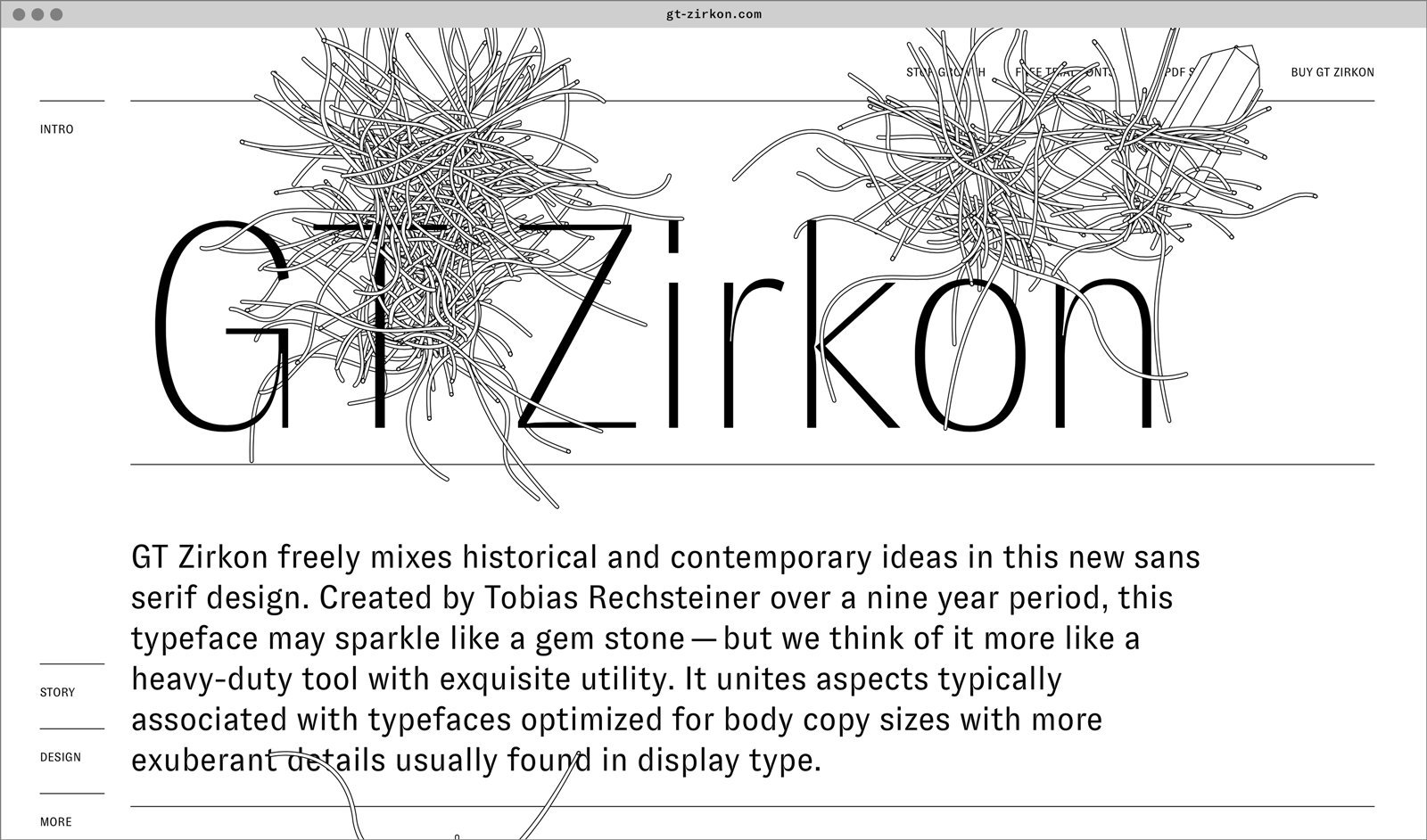
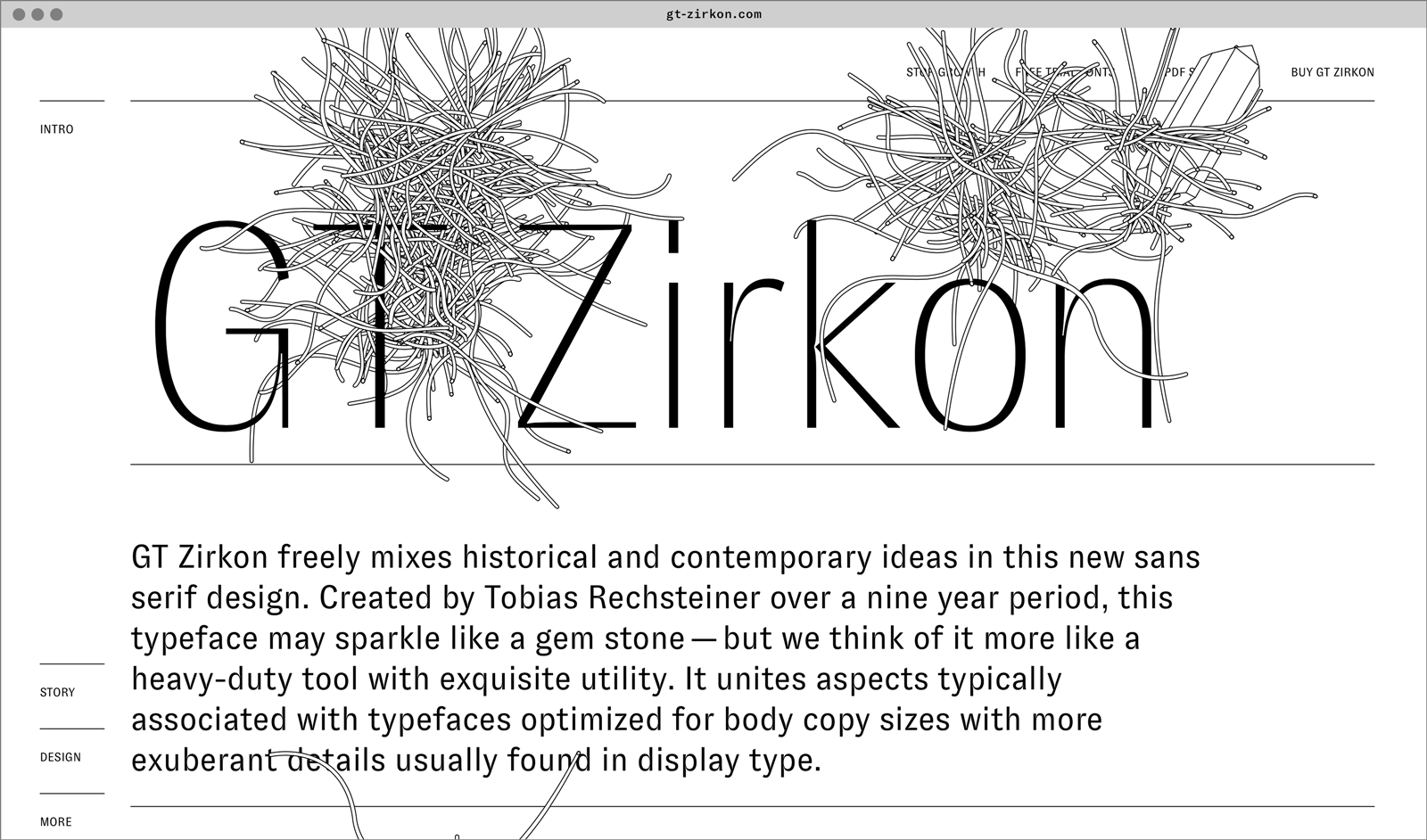
- Visit the GT Zirkon minisite to discover more about the typeface family’s history and design concept.
GT Zirkon in use
